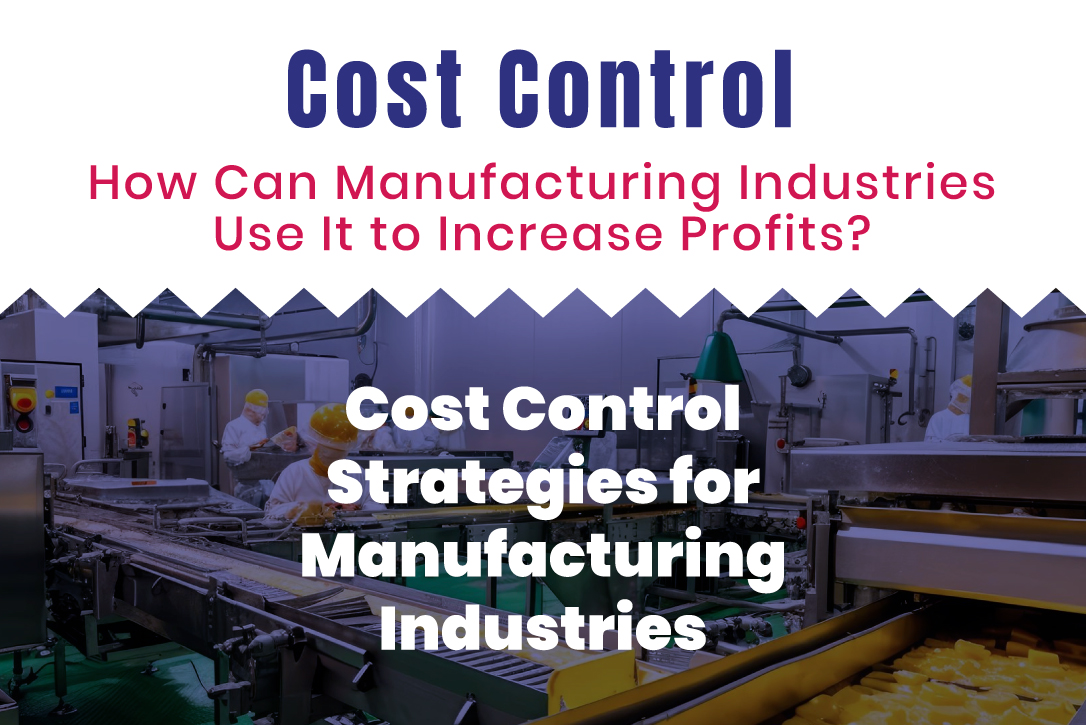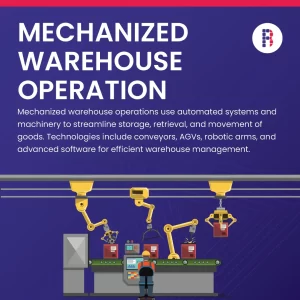Introduction
Cost control is a critical aspect of managing a manufacturing business. In an increasingly competitive global marketplace, manufacturers must find ways to reduce operational costs while maintaining or even improving product quality. By implementing effective cost control strategies, manufacturing industries can not only survive but thrive, ultimately increasing their profits. In this blog, we will explore the importance of cost control and delve into various strategies that manufacturing industries can employ to enhance their bottom line.
The Importance of Cost Control
Manufacturing industries face several challenges in today’s dynamic business environment. They must keep up with evolving technologies, comply with stringent regulations, and meet customer demands for high-quality products at competitive prices. Effective cost control is the key to overcoming these challenges and ensuring long-term sustainability. Here are some of the reasons why cost control is essential for manufacturing industries:
- Competitive Advantage: By reducing production costs, manufacturers can lower the prices of their products or improve profit margins. This positions them competitively in the market, attracting more customers and sustaining long-term growth.
- Improved Profit Margins: Efficient cost control measures directly impact a company’s bottom line. Increased profitability enables manufacturers to reinvest in their business, expand operations, or develop new products.
- Risk Mitigation: Cost control helps manufacturers identify and address potential financial risks. By maintaining a tight grip on expenses, companies are better equipped to weather economic downturns and market fluctuations.
- Resource Allocation: Effective cost control allows manufacturers to allocate resources more efficiently. This includes investing in research and development, upgrading machinery, or hiring skilled workers to drive innovation and productivity.
Cost Control Strategies for Manufacturing Industries
- Process Optimization
- Lean Manufacturing: Implementing lean manufacturing principles can help companies streamline their processes, reduce waste, and enhance overall efficiency. This approach involves continuous improvement, waste reduction, and employee involvement.
- Automation: Invest in automation technologies to replace manual labor and repetitive tasks. Automation not only improves efficiency but also reduces the risk of errors, leading to cost savings in the long run.
- Inventory Management: Efficiently manage inventory to avoid overstocking or stockouts. Implement just-in-time (JIT) inventory systems to reduce storage costs and improve cash flow.
- Energy Efficiency
- Energy Audits: Conduct regular energy audits to identify areas where energy consumption can be reduced. Upgrading equipment to more energy-efficient models and optimizing production schedules can lead to significant savings.
- Renewable Energy Sources: Consider transitioning to renewable energy sources such as solar or wind power. This can not only reduce energy costs but also enhance your company’s sustainability and reputation.
- Supplier Collaboration
- Negotiate Supplier Contracts: Engage in proactive negotiations with suppliers to secure better prices, terms, and quality standards. Long-term partnerships with reliable suppliers can provide stability and cost benefits.
- Supplier Diversity: Diversify your supplier base to reduce the risk of price fluctuations or disruptions in the supply chain. This strategy can enhance cost control by mitigating the impact of external factors.
- Employee Training and Engagement
- Skills Development: Invest in your workforce by providing training and development opportunities. Skilled and engaged employees are more productive and contribute to cost control by reducing errors and waste.
- Incentives: Implement incentive programs that reward employees for cost-saving ideas and initiatives. Employees who are motivated to identify inefficiencies can be a valuable resource in reducing expenses.
- Quality Control
- Six Sigma: Implement Six Sigma methodologies to improve product quality and reduce defects. By minimizing defects and rework, you can save on materials and labor costs.
- Continuous Monitoring: Continuously monitor and evaluate product quality to identify and rectify issues promptly. Addressing quality concerns early can prevent costly production problems down the line.
- Data Analytics
- Data-Driven Decision Making: Leverage data analytics to gain insights into your manufacturing processes. By analyzing data, you can identify cost-saving opportunities and make informed decisions.
- Predictive Maintenance: Implement predictive maintenance strategies using data analytics to reduce unexpected downtime and repair costs by addressing machinery issues before they escalate.
Conclusion
Cost control is essential for the success and profitability of manufacturing industries. By optimizing processes, improving energy efficiency, collaborating with suppliers, engaging employees, ensuring quality control, and harnessing data analytics, manufacturers can reduce operational expenses while maintaining or even enhancing product quality. These strategies not only lead to cost savings but also provide a competitive advantage, risk mitigation, and resource allocation for long-term growth and profitability. In today’s competitive landscape, manufacturing industries that embrace cost control will be better positioned to increase their profits and remain sustainable in the long run.






